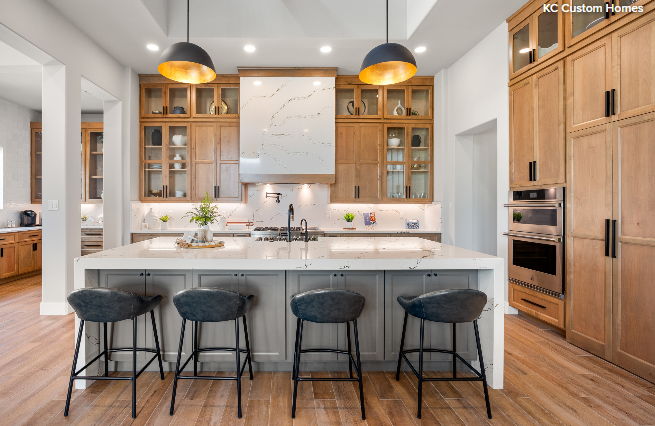The 5 Layers of a Well-Lit Kitchen
Develop a layered lighting plan to create a functional, adaptable and illuminated kitchen
When planning a lighting scheme for a client’s kitchen, I like to think about cake. Let me explain. On my birthday, a red velvet cake always comes my way, and it includes four layers plus a cherry and icing on top. Just like that cake, a well-lit kitchen should also have multiple layers for different lighting needs. I call these light layers “doing,” “knowing,” “feeling” and “changing.” The last layer is decorative.
“Doing” lights help you perform manual tasks like prepping and cooking in the kitchen. “Knowing” lights help you navigate your way around a kitchen. “Feeling” lights make a kitchen feel inviting and comfortable. “Changing” lights help you adjust to the time of day and set a desired mood. And finally, the cherry and icing on top are all about adding decorative fixtures that let your personal style shine.
Layer 1: Lights for Doing
Your kitchen lighting scheme should start with creating a functional workspace. Adding lights where you need them the most, such as above countertops, sinks and cooktops, will let you perform manual tasks in a bright and safe atmosphere. We need light to see what we’re doing, especially when using sharp knives and high-temperature burners. You want to protect your fingers, so getting this layer right is important. LED lights mounted underneath cabinets are also a great way to add functional lighting to your kitchen.
Layer 2: Lights for Knowing
Designers call it “ambient light,” but it is really just a layer of light to help us know where we are and where we are going. Recessed “can” down lights are a great option because they light up the floor and bounce light off cabinet fronts to create a bright, well-lit space. Adding toe-kick lighting underneath cabinets and islands is also a great way to help prevent stubbing toes at night. Wall sconces are another way to provide ambient lighting that can help you better navigate your kitchen.
Layer 3: Lights for Feeling
Showcase lights, also known as accent lights, all have one thing in common: They help a space feel more inviting and comfortable. Whether you use illuminated cabinets, chandeliers, sconces or pendants, showcase lights should be visible from wherever you stand or sit in the kitchen. That way you’ll get the benefit of this feel-good lighting at all times. Showcase lights might also help you perform functional tasks in the kitchen, but their main purpose is to draw attention and make a room feel complete.
Layer 4: Lights for Changing
As the sun changes location in the sky, lighting needs inside the kitchen change as well. During the day, natural light from windows might be all the lighting your kitchen requires. But at night, you’ll want your kitchen brighter for cooking meals and more dramatic for entertaining guests. Adding dimmers to your kitchen lighting is key for setting the mood.
Keep in mind that our eyes require more light as we age. So if you expect to stay in your home for awhile, you might want to add more lights than necessary now so you’ll have them later.
Cherry on Top: Decorative Light Fixtures
The fun part is choosing decorative fixtures that look at home in your kitchen, like these large pendants. Think carefully about your personal style and kitchen design and then determine whether the light fixtures you choose can add any of the other layers of light needed.
Not keen on decorative fixtures? Choosing to minimize visible fixtures is also a valid style choice ideal for streamlined modern designs. You may want to highlight something else, like the range hood illuminated in this kitchen.








